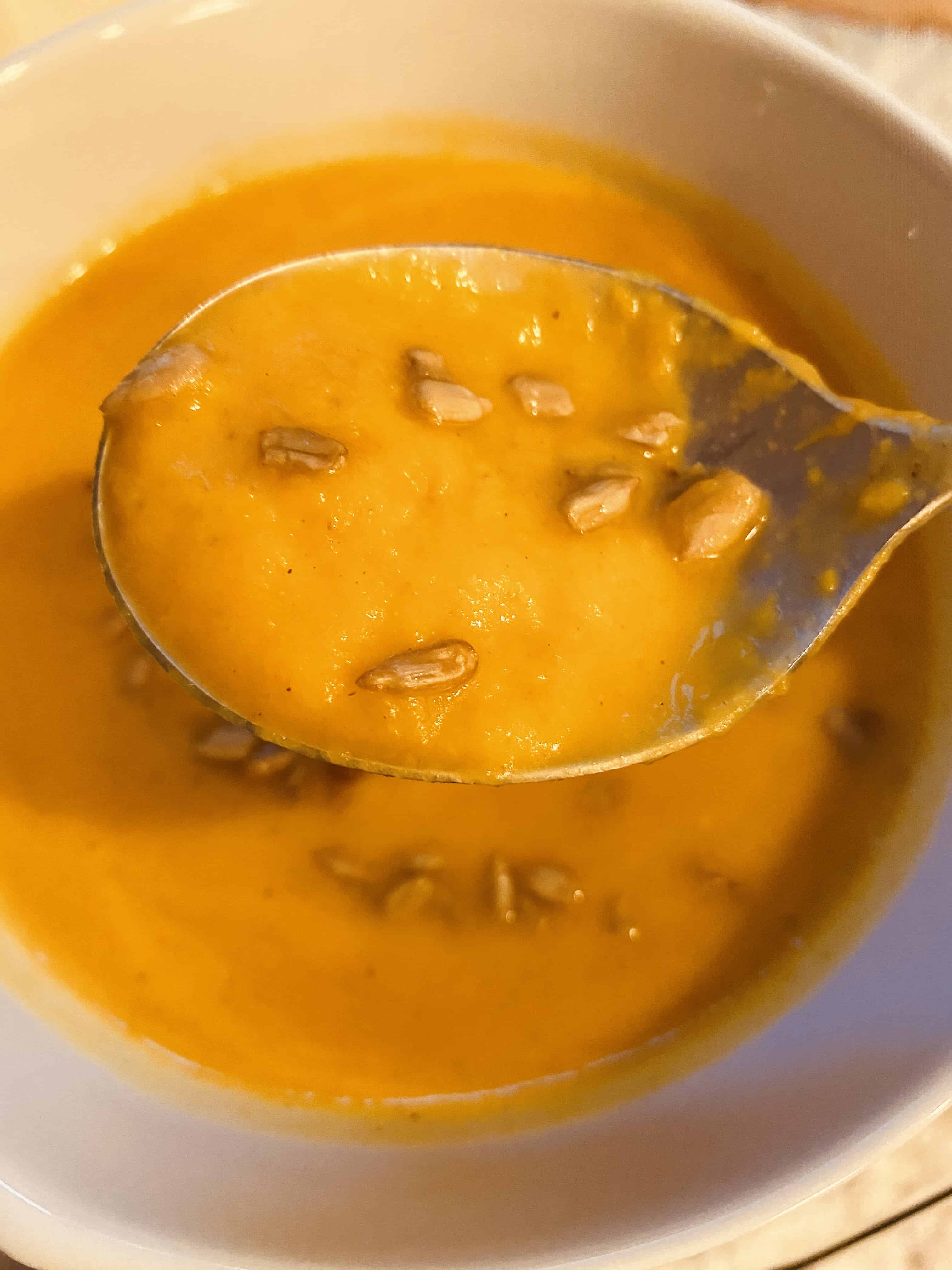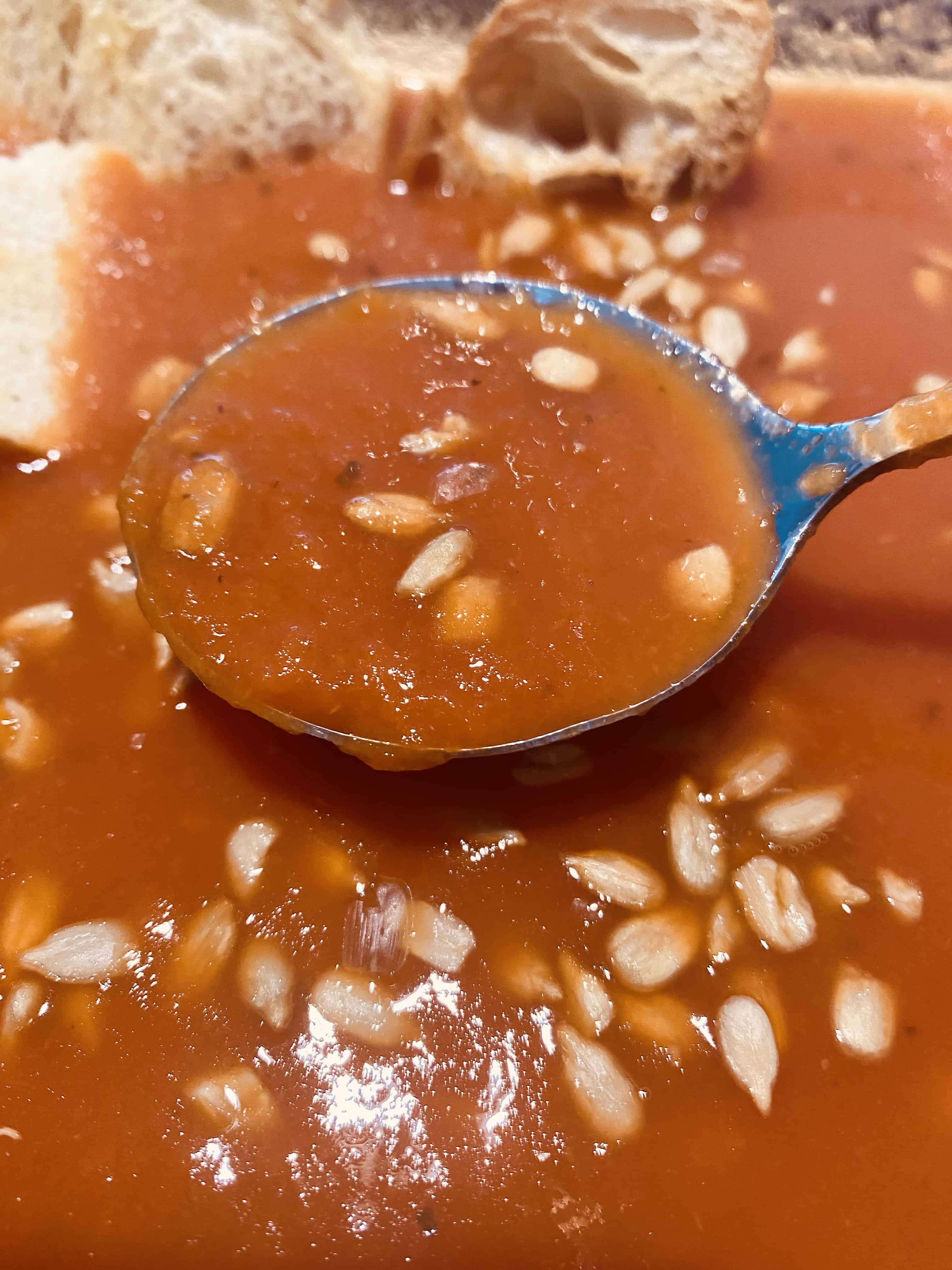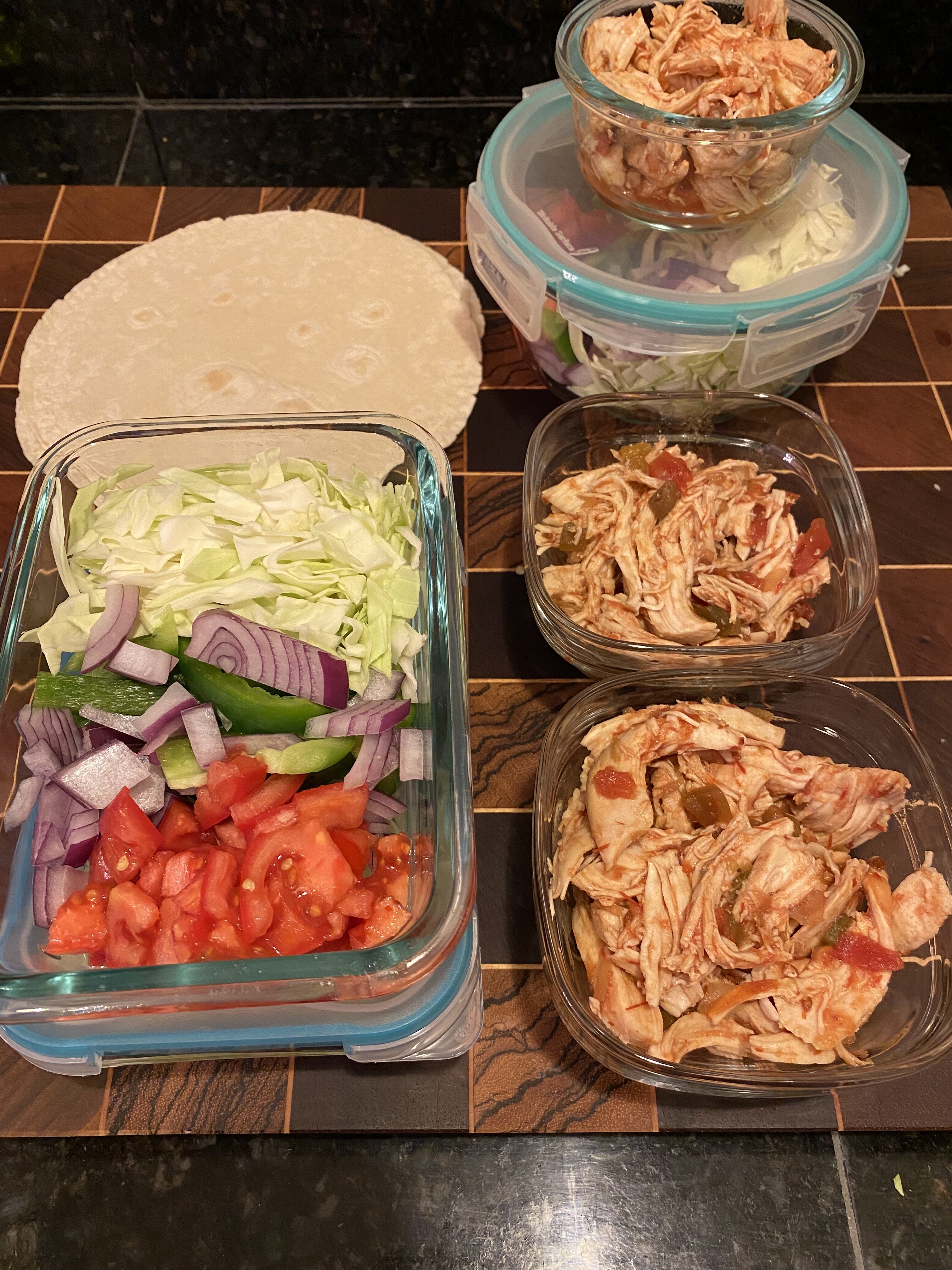These soups are healthy, hearty and simple to create!
I love recipes that are forgiving. Especially when I’m busy, or meal prepping a few things at once, I don’t have time to worry about missing a step or doing some things out of order. That’s why I don’t bake! It’s too precise. I love cooking foods with the ingredients I have and the time I have. Over the years of my own cooking, I’ve developed templates in my mind of my favorite types of recipes: easy, quick, good for meal prepping for leftovers or to portion into the freezer. For me, soup checks all of those boxes! Today we are going to talk about a template for fall soups that are thick and creamy: squash, tomato, pumpkin, broccoli and veggie soup. Even adding cream at the end is optional! Whenever you can, cook with whatever vegetables are fresh and in season locally to you. Not only is it good for the environment and it supports your local farming industry, the food is better! Fresh vegetables taste so good on their own that you don’t need to hide those flavors with extra ingredients to doctor up the dish. Let the fresh flavor speak for itself. Added bonus: save on time, money, and stress of preparing a delicious batch of healthy, filling, satisfying soup: as small or large a batch as you’d like.
The basic ingredients:
- Your main vegetable
- A liquid
That’s it! You can make a delicious tomato soup with no onions or garlic. Your butternut squash can be the star with no tears on that cutting board. Of course, you can add whatever you want – but the basics are what you need to get going. You can layer in flavors from there based on your preference, what you have on hand, and how much time you have.
Your basic directions:
- Cook the veggies almost all of the way through.
- Brown them in a little oil or butter in the bottom of a large pot.
- Add your liquid: water (you’ll need to add more spices for flavor) or stock. Season with spices of your choice (at least salt and pepper).
- Simmer until everything is soft and delicious (20-40 minutes depending on the veggies and how cooked they are before adding liquid).
- Use a blender to smooth out the vegetables and broth into a thick, creamy consistency. If you like your soup more chunky, give this a quick swirl to your liking. If you want a smooth broth, blend until there are no lumps left.
- Taste and season one last time. Stir in a little extra water if the soup is too thick; let it simmer a little longer if it is still too thin.
- Enjoy hot, as is or with a little garnish.
Tips for groceries
Your Lead Vegetable
If you can roast it, you can add it to the soup. In fact, once you’ve tried all the different vegetables to make traditional soup recipes, mixing and matching vegetables and flavors is a great way to keep your meals interesting all winter long.
Any of your winter squashes can be turned into a soup on their own or as a combination. I love pairing butternut squash and acorn squash together. One of my favorite time saving hacks is to roast extra squash with dinner one night, scoop out the flesh and save in the fridge to make a 20 minute soup the next day. If I have enough time during the first evening, I do it all at once so dinner or lunch is ready to go and I don’t even feel like I’m eating leftovers.
Popular vegetables for fall soups include:
- Butternut squash
- Acorn squash
- Tomato
- Pumpkin
- Broccoli
The Supporting Actors
To layer in even more flavor, you can add a base of onion, carrot, and celery to any of these soups. It gives the soup depth and complexity. If you have the ingredients, I highly recommend taking the time to add these to your base. To make it heartier, you can add any kind of potato: white, red, or sweet. I’ve baked or boiled the potatoes ahead of time, but if you dice them up small enough you can cook them right in the soup. Again, this is a template – so there is no right or wrong answers. One of my pet peeves is buying a whole batch of vegetable and then throwing most of them away. That happens to me with celery – I don’t love it; I only use it in soup pretty much; I won’t eat it as a snack. So if I buy a whole bunch, I know most of it is going in the garbage. So I skip it most of the time, unless it’s a party or Thanksgiving. But I always have room for onions and carrots in other recipes, so I like to add those to the base of my soup much more consistently. Like always, do what works for you and your habits – make your food work for you, not the other way around!
Liquid
By liquid, I mean flavorful liquid akin to a broth. There are a few ways you can achieve this, based on your available resources and preferences. When I have some in the freezer (and enough time to thaw it out), I absolutely love LOVE using homemade chicken stock when I make soup. Maybe it’s the added pleasure of knowing the meal is entirely from scratch, but I swear it elevates the flavor profile and is worth it every time. That being said, I always have a good brand of a low sodium chicken, turkey, or vegetable stock in my pantry for when I need it.
If you don’t have or like premade stock, you can make your own broth using a bullion-type product and water and create your own broth on the fly. You can also use plain water and be sure to use a combination of whatever spices you have and enjoy to bring back the flavors of the stock: salt, pepper, italian seasonings like oregano and basil, onion or garlic powder, celery salt, or even paprika or chili powder for a subtle kick. For a while I was adding smoked paprika to everything!
Seasoning
The above mentioned seasoning are all great options to add flavor to your soup. You can be as bland or heavy handed with your spices as you wish.
Seasoned chefs (pun intended) remind us to season as you go, meaning at each step of the recipe. When you first add your vegetables to the pot, season them with at least salt and pepper, as well as whatever combination you decide. If I’m using water, I definitely add spices when I add the water. I do caution you if you are using broth. I like to let the stock or broth incorporate and simmer a bit before I taste it and decide on extra spices. You can always add salt, but you definitely cannot take it out!
Garnish
I used to think garnish was a waste of time when I was cooking just for myself – especially when prepping a few portions at a time for the week. Why bother chopping up some green onions when it’s good enough on its own? Now, however, I use garnish to treat myself and make every meal just that much more special, even when I’m eating leftovers. And there is a purpose. An extra texture or flavor to a smooth soup can really knock it out of the park. Crumbled bacon bits on broccoli cheddar soup, a garlic crouton on top of the creamy tomato, or a few pomegranate seeds to sweeten up a butternut squash can really elevate the flavors with very little extra action.





